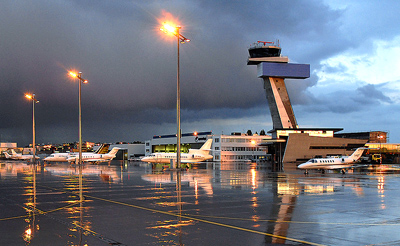Weather - Rules for Rainy Days

The Federation of Indian Airlines recently drew up a wishlist of safety measures that the Ministry of Civil Aviation could incorporate towards safer monsoon operations.
Derived from mausam, arabic for season, monsoons embody an unique climatic phenomenon of the Indian subcontinent. The word monsoon conjures up images of torrential rainfall. In hydrology, the term monsoon rainfall has now come to denote precipitation in an area that receives the major portion of its rainfall during that particular season referred to as the monsoon season. By that logic, North America, South America, Sub-Saharan Africa, Australia and East Asia can also be called monsoon regions. However, the Indian pre-occupation with monsoon is complete. Financial planning, markets, budget exercise, indeed all commercial, agricultural and industrial activities related to the economy are inextricably linked to the monsoons. Aviation is affected too in a major way.
A Civil Aviation Requirement (CAR) (Section 7, Series B, Part V, Issue 1) issued in 1995 by the Director General Civil Aviation (DGCA) lays down the syllabus for Senior Commercial Pilots’ License examination. In Para 2.1.18, under the heading Indian Climatology, it lists three seasons—Pre-Monsoon, South West Monsoon and Post-Monsoon Seasons. The DGCA’s fixation with the monsoon is obvious from these terminologies. Being responsible for a majority of aviation accidents or incidents that take place in this season, the South West Monsoon is hazardous to aviation in India. The North East Monsoon is relatively benign and for the purpose of this article, the term monsoon refers to the South West Monsoon.
DGCA Initiatives
Although it is possible to define this season in terms of time, it would be appropriate to mention here that at most times of the year, monsoon-like conditions prevail in one part of the country or another. Thus, to classify a particular period of the year as being monsoon-season and hence deserving reverence by aviators is tantamount to being unmindful of the rest of the year when the unwary aviator may encounter monsoon-type weather conditions. However, it is customary for the DGCA to issue, before the onset of the monsoon, a circular reiterating a few oft repeated precautions, some of which were originally issued as far back as 1991. These relate essentially to operations and engineering with some general points. Some of them have already been in practice—monsoon or no monsoon. For example, an exhortation to follow the route approved in the flight plan meticulously is perhaps unnecessary. However, others, like having two alternative airfields in the flight plan as diversions instead of one, are likely to be beneficial during the monsoon season.





